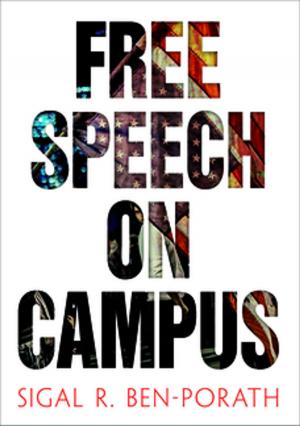Enchantment
On Charisma and the Sublime in the Arts of the West
Nonfiction, Art & Architecture, General Art, Art History, Fiction & Literature, Literary Theory & Criticism, Social & Cultural Studies, Social Science| Author: | C. Stephen Jaeger | ISBN: | 9780812206524 |
| Publisher: | University of Pennsylvania Press, Inc. | Publication: | March 19, 2012 |
| Imprint: | University of Pennsylvania Press | Language: | English |
| Author: | C. Stephen Jaeger |
| ISBN: | 9780812206524 |
| Publisher: | University of Pennsylvania Press, Inc. |
| Publication: | March 19, 2012 |
| Imprint: | University of Pennsylvania Press |
| Language: | English |
What is the force in art, C. Stephen Jaeger asks, that can enter our consciousness, inspire admiration or imitation, and carry a reader or viewer from the world as it is to a world more sublime? We have long recognized the power of individuals to lead or enchant by the force of personal charisma—and indeed, in his award-winning Envy of Angels, Jaeger himself brilliantly parsed the ability of charismatic teachers to shape the world of medieval learning. In Enchantment, he turns his attention to a sweeping and multifaceted exploration of the charisma not of individuals but of art.
For Jaeger, the charisma of the visual arts, literature, and film functions by creating an exalted semblance of life, a realm of beauty, sublime emotions, heroic motives and deeds, godlike bodies and actions, and superhuman abilities, so as to dazzle the humbled spectator and lift him or her up into the place so represented. Charismatic art makes us want to live in the higher world that it depicts, to behave like its heroes and heroines, and to think and act according to their values. It temporarily weakens individual will and rational critical thought. It brings us into a state of enchantment.
Ranging widely across periods and genres, Enchantment investigates the charismatic effect of an ancient statue of Apollo on the poet Rilke, of the painter Dürer's self-portrayal as a figure of Christ-like magnificence, of a numinous Odysseus washed ashore on Phaeacia, and of the black-and-white projection of Fred Astaire dancing across the Depression-era movie screen. From the tattoos on the face of a Maori tribesman to the haunting visage of Charlotte Rampling in a film by Woody Allen, Jaeger's extraordinary book explores the dichotomies of reality and illusion, life and art that are fundamental to both cultic and aesthetic experience.
What is the force in art, C. Stephen Jaeger asks, that can enter our consciousness, inspire admiration or imitation, and carry a reader or viewer from the world as it is to a world more sublime? We have long recognized the power of individuals to lead or enchant by the force of personal charisma—and indeed, in his award-winning Envy of Angels, Jaeger himself brilliantly parsed the ability of charismatic teachers to shape the world of medieval learning. In Enchantment, he turns his attention to a sweeping and multifaceted exploration of the charisma not of individuals but of art.
For Jaeger, the charisma of the visual arts, literature, and film functions by creating an exalted semblance of life, a realm of beauty, sublime emotions, heroic motives and deeds, godlike bodies and actions, and superhuman abilities, so as to dazzle the humbled spectator and lift him or her up into the place so represented. Charismatic art makes us want to live in the higher world that it depicts, to behave like its heroes and heroines, and to think and act according to their values. It temporarily weakens individual will and rational critical thought. It brings us into a state of enchantment.
Ranging widely across periods and genres, Enchantment investigates the charismatic effect of an ancient statue of Apollo on the poet Rilke, of the painter Dürer's self-portrayal as a figure of Christ-like magnificence, of a numinous Odysseus washed ashore on Phaeacia, and of the black-and-white projection of Fred Astaire dancing across the Depression-era movie screen. From the tattoos on the face of a Maori tribesman to the haunting visage of Charlotte Rampling in a film by Woody Allen, Jaeger's extraordinary book explores the dichotomies of reality and illusion, life and art that are fundamental to both cultic and aesthetic experience.















